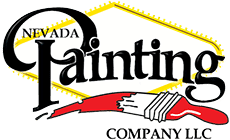
Don’t Make These Painting Mistakes This Holiday Season
However, at The Painting Company, we’ve learned over the years that nothing spoils the transformation you’re after more than mistakes. Trust us, these are the painting mistakes you don’t want to make this holiday season.
Using Cheap Brushes and Rollers
They say you get what you pay for and while that doesn’t always apply to every situation, it definitely does when discussing paint brushes and rollers. By deciding to use the cheaper options, you’re actually causing yourself more of a headache and potentially spending more money in the long run. Quality brushes and rollers provide better coverage overall and ultimately save on paint. Plus, brushes and rollers of higher quality are an investment, as they’ll last you longer whereas the cheaper options force you to replace them more frequently.
Avoiding Prep
It’s not uncommon for people to get caught up in the excitement of making over their room and skip most or all of the necessary prep work. Diving right into painting and having the color on the wall is the most exciting part, but there are a few things to address first. The walls need to be cleaned, peels, cracks and blemishes should be remedied, and any patching or sealing materials should be allowed to dry completely before beginning. Painter’s tape should be applied in all necessary places securely and accurately before paint ever touches the wall.
Painter’s Tape vs. Masking Tape
Speaking of painter’s tape, use it. It’s imperative that you use real painter’s tape instead of masking tape or other seemingly comparative tapes on the market. To ensure lines are sharp and touch-ups are kept to a minimum, investing in and using quality tape specifically designed for painting will save you time and prevent bleed through of your paint. Once the tape has been applied, seal it with a putty knife to force any air bubbles out so the edges will result in a crisp line once removed.
Not Using Primer
Choosing to paint without primer can mean the difference in a professional looking paint job versus an amateur one. Primer prepares the surface and the existing color to take on the new paint, which results in a finish that looks more like the paint chip you held when choosing your color originally. Flaws can be covered with the primer and completely hid before the paint color is used.
Painting Over Wallpaper
While wallpaper should be taken down more often than not before painting, it’s not unusual to paint over it instead. When doing so, you should use an oil-based primer to prepare the surface first. Using water-based primers can reactivate the wallpaper glue instead of prepping the surface, a counter-productive mistake that could cost you time and money.
Using the Wrong Type of Finish
Certain finishes should be used in certain areas. Choosing the incorrect finish, flat paint in a high traffic area for example, could be setting your efforts up for failure. In high traffic areas, the walls are typically touched more often than in less frequently used areas. As a result, the paint finishes, like a semi-gloss or satin, need to be more susceptible to common cleaning and wiping down.
Not Addressing the Existing Finish
On the other side of the coin, it’s important to address the existing finish of the color you’re painting over. If it’s a high-gloss paint, you should add a step in your prep work by lightly sanding the walls before cleaning them. In doing so, you’ll provide a nice texture to the wall, giving the new paint something to adhere to.
Bad Technique
Nothing will ruin a new paint job quicker than a poor application process. Make sure you’re not dipping the brush or roller into too much paint at once. A good rule of thumb is to only dip the brush in a third of the way, same with the roller when rolling, as it will still collect enough paint to apply to the wall without taking on too much. When painting, you should always start at the highest point and work down to catch any drips that may start before they dry to ensure the smoothest finish.
Avoiding or Delaying Cleanup
Remember those high-quality brushes and rollers we talked about? When your walls are covered and you’re finished painting, wash those brushes and rollers immediately with water and dish detergent. If you decide to wait, the paint could dry and harden the bristles, which makes it extremely difficult to clean thoroughly later or even use them again.
Perhaps the best way to avoid making any or all of these mistakes is to leave it to the professionals. Our team at The Painting Company considers all of these points lessons learned. Reach out to us today to discuss all of your painting needs.
